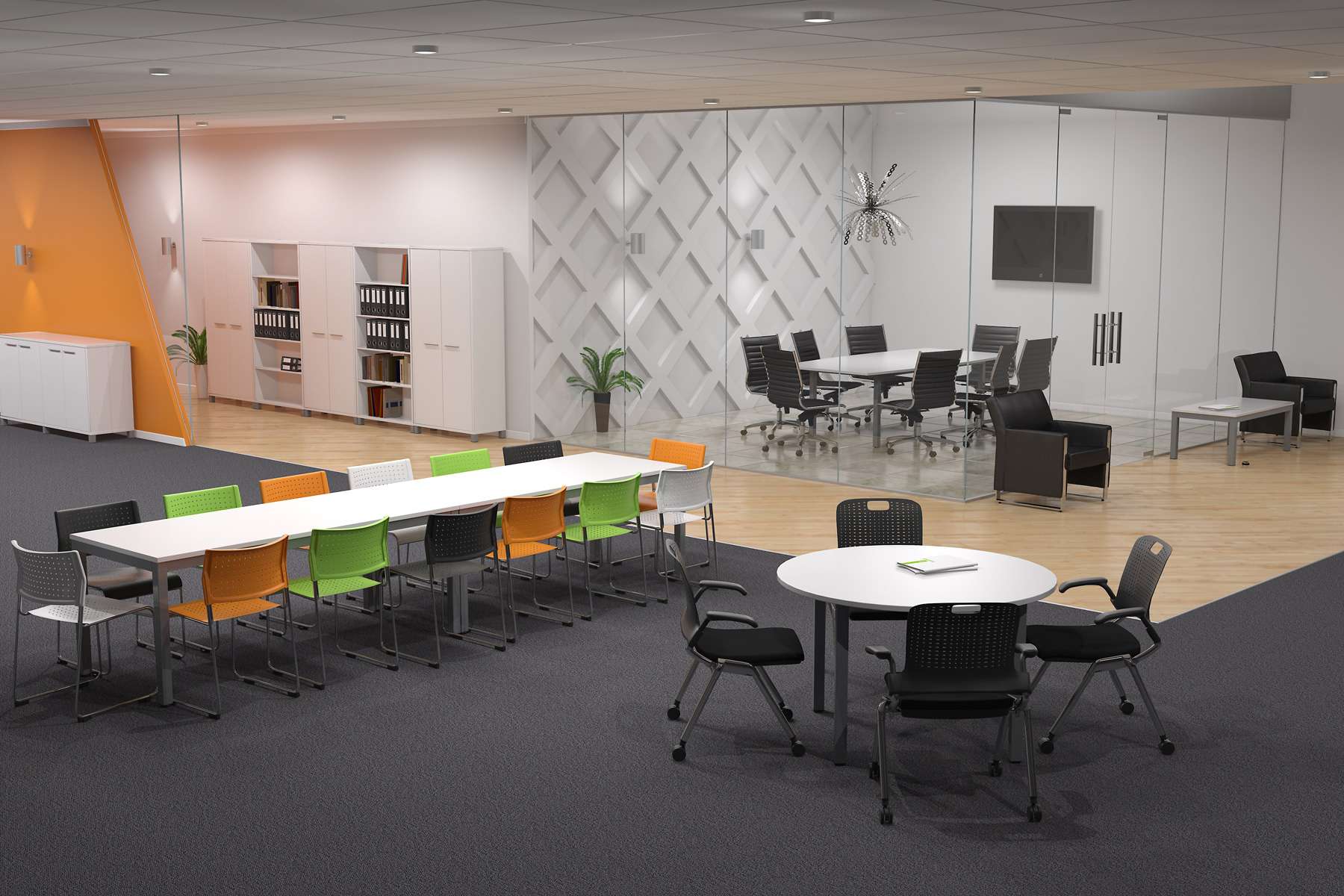
25 Mar Company Culture and Workspace Design
Company Culture and Workspace Design
According to Gensler’s Workspace Index, extended workdays, new distractions, and downward pressure on real estate costs are compromising the effectiveness of the U.S. workplace. Strategies to improve collaboration proved ineffective if the ability to focus was not also considered. When the focus is compromised in pursuit of collaboration, neither works well.
Effective workplaces require spaces that encourage the balance of focus and collaboration. Gensler identified four key areas that need to be available for employees. These are areas where they can focus, collaborate, learn and socialize.
Focus: This is anything that an employee has to do alone and to do it with little or no interruption. Low noise levels, and little distractions which can be found in cubicles, offices and quiet workplace station areas.
Collaborate: Collaborative work refers to when people join together to achieve a productive purpose. This includes meeting spaces, conference rooms, and some third spaces like relaxing spaces.
Learn: The learning mode of work refers to when an employee spends their time to either gain knowledge or improve his or her skill set. This can include outdoor conference spaces, traditional conference rooms, and an auditorium.
Socialize: Socialization time increases trust and lowers barriers to professional communication, making other types of work easier. Socialization areas include cafeterias, cafés and in-office amenities like gyms and healthfood vending machines.
Third Spaces: Creating a highly effective corporate third place involves more than access to good coffee and Wi-Fi—it’s about integrating work and life. Provide a range of spaces from which employees can choose to work, based on their mood and task.
There is no “one-size fits all” formula for the perfect workplace, but here are some great ideas to consider:
Case Study: Consider SAP which has an open environment, cubicles, a collaborative innovation hub, a co-working café, conference rooms, smaller meetings rooms, and areas for presentations. LinkedIn, Cisco, Airbnb, and many other organizations have similar environments.
Case Study: At Atlasssian and Mars Drinks, they used sensors on employee desks to find out how often they are used. Over time both companies realized that employees don’t really work much at their desks, they move around, go to conference rooms, find quiet areas, and prefer to work from other spaces besides their desk. As a result, both companies completely redesigned their facilities to accommodate this.
According to Inc.com, “It isn’t enough to have an engaged workforce, looking towards the future, companies also need to keep a healthy influx of new talent. As the natural progression of employees move on to elevated career paths or retire, Generation Z is knocking at the door. These new recruits only know innovative workplaces, with posh Silicon Valley headquarters as the measuring stick. When these applicants come to your workplace, you need to attract them. Ryan Jenkins, a millennial speaker and generations expert, advises that for your company to attract Gen Z it must be collaborative, offer flexibility, and promote both well-being and value infusion.”
Speak with our team to get started on your culture-thriving work environment!
Call us at 800.427.5811 or Email: info@rigroup-us.com
Sources:
- https://www.forbes.com/sites/jacobmorgan/2015/12/03/how-the-physical-workplace-impacts-the-employee-experience/#76b4733e779e
- https://www.faciliteq.com/news-and-events/workplace-design-influences-company-culture/
- https://www.inc.com/adam-heitzman/why-workplace-is-so-critical-to-employees-success.html
- https://www.gensler.com/uploads/document/337/file/2013_US_Workspace_Survey_07_15_2013.pdf
- http://www.reoptimizer.com/real-estate-optimization-blog/the-four-keys-to-workplace-productivity



















